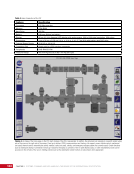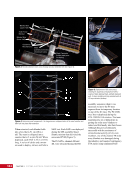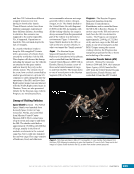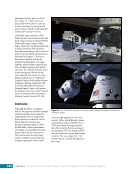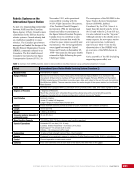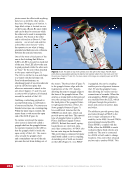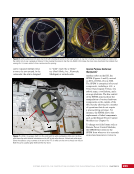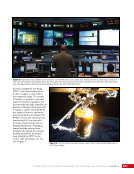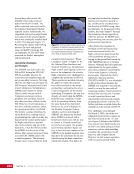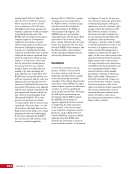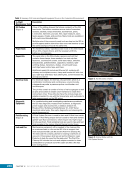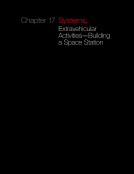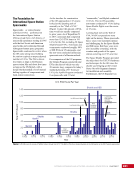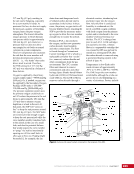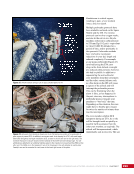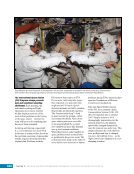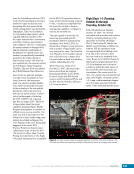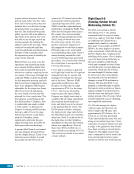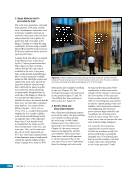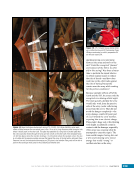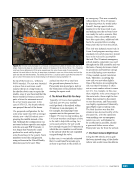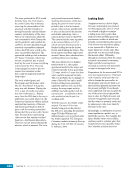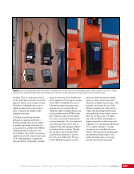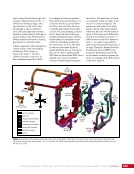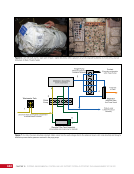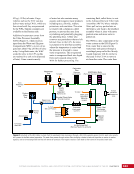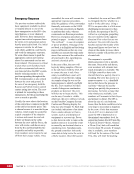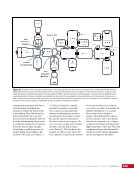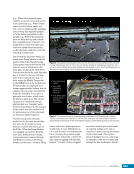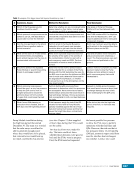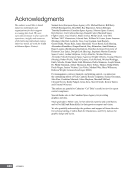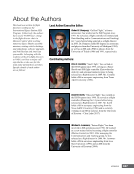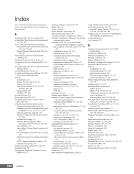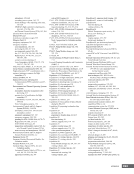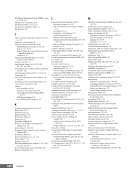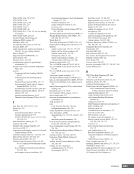CHAPTER 18 DAY IN THE LIFE: RISKY AND REWARDING SPACEWALKS—SPACE SHUTTLE MISSION STS-120/ISS-10A 310 For these reasons, the STS-120 mission was initially planned with three spacewalks to be performed by crew members coming up in the shuttle (Figure 4). n EVA 1. The first EVA was required to disconnect and prepare Node 2 so it could be robotically unberthed from the shuttle cargo bay using the Space Station Robotic Manipulator System. Also, the first of the truss element P6 connections were to be demated to allow for its later release from the central truss element Z1. Shuttle astronauts Scott Parazynski and Doug Wheelock (nickname “Wheels”) were trained to perform this EVA. n EVA 2. The second EVA was needed to release the remaining connections and bolts for a final disconnect of P6 from Z1. This EVA was also needed to install critical exterior parts onto the outside of Node 2 before the operations in the stage and next shuttle missions. Parazynski and Dan Tani were trained to perform this EVA. Between EVAs 2 and 3, extensive robotic operations were needed to move the P6 segment close to its final location on the P5 truss. n EVA 3. The third EVA was needed to align, bolt, and connect up P6 as well as ready a radiator for deploy. At the end of the third EVA, while the EVA crew was still outside, Mission Control Center- Houston would start deploying the radiator and P6 solar arrays 2B and 4B to begin generating power for ISS use. Shuttle astronauts Parazynski and Wheelock were trained to perform this EVA. Several secondary objectives were included with the three EVAs. One task was to remove a failed antenna called the S-band Antenna Support Assembly, which weighed 103 kg (228 lbs), from the ISS and install the antenna in the shuttle cargo bay for return to the ground. The crew also took a new spare power distribution unit called a Main Bus Switching Unit, which is 238 kg (525 lbs), out of the cargo bay and placed it near the ISS airlock to be used in case of future failures of this type of unit. These operations and other tasks were built in as part of the three EVAs. Originally, three other ISS EVAs were planned after the STS-120 mission. These EVAs were needed for the Node 2 move to its final location on the forward end of the laboratory. The ISS crew had been training for these “stage” (i.e., shuttle not present) EVAs. See the Introduction for more details about stage EVAs. Last-minute Spacewalks Added to the Mission Preflight After the STS-120 mission was initially planned, the shuttle orbiters were changed from Atlantis to Discovery due to a delay in preparing Atlantis for flight. Discovery had been outfitted with the capability to draw power from the ISS after docking, thus the mission could be extended and the number of EVAs to be performed during the mission could be increased. EVAs during shuttle docked mission were advantageous because the combined number of crew members on board would be 10 (seven shuttle, three ISS) therefore, more crew hours would be available to get the spacewalkers ready. The same strategy is discussed in Chapter 4 with respect to STS-130/ISS-20A. As a result, in the spring of 2007, a pre-planned stage EVA by the ISS crew was moved into the shuttle docked time frame to bring the total number of EVAs during the mission to four. Two already-trained ISS crew members (Peggy Whitson and Yuri Malenchenko) would conduct this EVA. They would perform the EVA while the shuttle was present instead of after the shuttle departed. The team knew that if high-priority EVA tasks went long or new tasks were required during the shuttle docked time frame, the fourth planned spacewalk could be deferred until after shuttle departure. Whitson and Malenchenko, along with the required tools, would still be on board. The main purpose of this EVA was to get a step closer to the Columbus module mission by prepping for a robotic transfer of Pressurized Mating Adapter 2 to Node 2 and the eventual relocation of Node 2. The EVA crew would be demating connectors between the Pressurized Mating Adapter and the Laboratory, and removing a cover from Node 2. After this change, and about a month prior to the flight, another spacewalk was developed and added to the mission in unusually quick fashion. This EVA was to be performed by Parazynski and Wheelock to test some material that could repair the Space Shuttle orbiter tiles, if damaged. Ever
Purchased by unknown, nofirst nolast From: Scampersandbox (scampersandbox.tizrapublisher.com)








































































































































